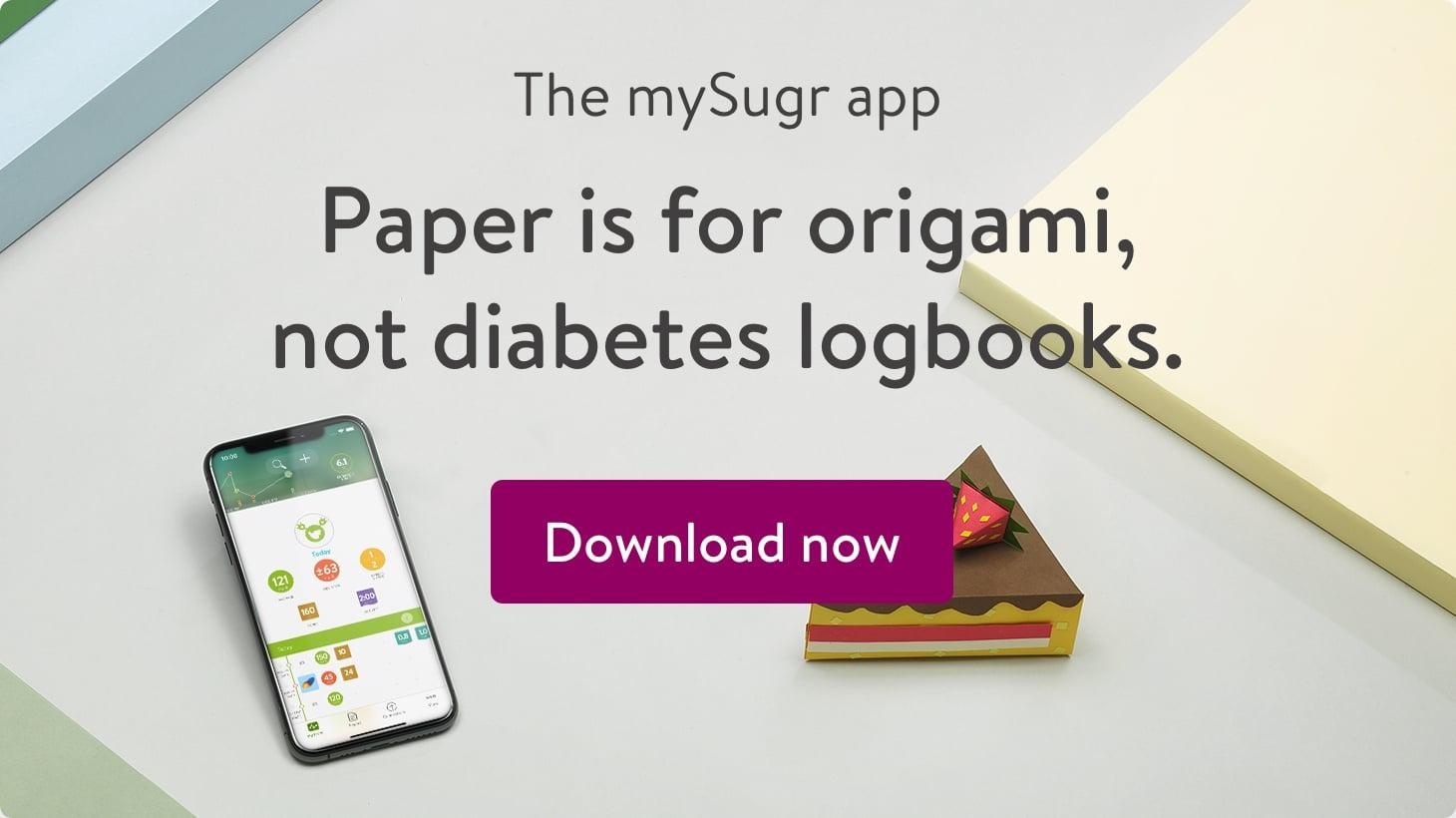What Is Hypoglycemia?
By definition, hypoglycemia is when blood glucose levels fall below 70mg/dL, and you need to take action to reverse the symptoms.
What Are The Symptoms Of Hypoglycemia?
Low blood sugars are one of the sucky realities of living with diabetes. Luckily, the symptoms are easy to spot if you can feel them and know what to look for!
Education is key for early intervention to reverse hypoglycemia.
Specifically, the most common signs of low blood sugar are:
- Fatigue, Weakness, or Clumsiness
- Feeling Lightheaded or Dizzy
- Anxiety, Irritability, Impatience
- Sweating or Clamminess
- Feeling of Shakiness
- Pale Skin
- Ravenous Hunger
- Rapid/Racing Heartbeat
- Numbness/Tingling of the face
If the blood glucose drops are more severe, the symptoms can also include:
- Confusion
- Erratic Behavior
- Blurred Vision
- Seizures
- Loss of Consciousness
What Causes Hypoglycemia?
In simplest terms, low blood sugar is derived from an imbalance between insulin and glucose levels in the body. Outside of diabetes, hypoglycemia is rare but can happen as a byproduct of non-diabetes related illnesses or certain medications.
However, hypoglycemia for people with diabetes usually occurs due to too much insulin. This can occur for a multitude of reasons:
- Exercise – While it has a host of benefits, exercise can be tricky to navigate for people with who take insulin since it utilizes the free glucose floating in your bloodstream up to 4-48 hours post-workout depending on the activity. Overcorrection of a high blood sugar can send you plummeting later.
- Miscalculation of Carbs – Different types of carbohydrates can all impact your body in fun and unique ways. Variety is the spice of life! Understanding how carbs affects your body is vital in preventing a correction factor snafu.
- Illness or Vomiting – If you throw-up your carbs, the end result is too much insulin in the bloodstream. Beyond that, illness can mess with a whole host of biological processes, including a temporary shift in insulin sensitivity.
- Hormones – Women in all phases of life can enjoy the added perk that hormone fluctuations can impact insulin sensitivity cyclically. What a bloody mess!
- Alcohol Consumption – Booze impacts your liver’s natural glucose release. A little precaution before, during and after a night out is critical for people with diabetes. Typically people with diabetes see a drop in glucose 6-10 hours after starting drinking.
QUICK TIP: Being drunk can sometimes look a lot like a low blood sugar. Weird, right!? So take extra precautions to educate yourself and your companions on hypo-protocols before a night out.
Don’t let the above list scare you! As much as it can sometimes feel like the hypo-monster is always looming. With a little preparation, and an ounce of prevention, you can be well-guarded from some of the more common causes of hypoglycemia.
How Do You Treat Hypoglycemia?
If you wear a pump, cancel any extended boluses, or suspend your pump as directed by your doctor. Just make sure you don't forget to restart insulin delivery once your blood sugar is back in a safe range!
Beyond that, treatment is as follows:
Your blood sugar is low, therefore add more sugar!
Clinically speaking, fast acting carbs reign supreme. Some people with diabetes follow the 15-15 rule, but this can vary depending on what your healthcare team suggests.
However you proceed, ingest 10-15 grams of quick carbohydrates (the faster absorbing, the better), wait 15 minutes, then check your blood glucose levels with your glucometer and if you are still below 70mg/dL, eat or drink an additional 15 grams.
Lather, rinse, repeat. Below is a handy list of some of the most common sources of quick-sugars (in order from most simplistic and fast-acting, to the longer-term sugars):
- Glucose Juice
- Glucose Gel
- Glucose Tablets
- Fruit Juice – those kiddy sizes are great for treating lows!
- Sugary Snack of Choice – we’ve tried and tested them all, find what works for you!
And sure, the 15-15 rule is ideal, but let’s get real here people.
People with diabetes have cornered the market on the colloquial term ‘HANGRY’ and for good reason. The human brain uses glucose as its fuel. So, when the brain feels that low coming, it kicks out all the fun adrenaline-fueled signals to make sure you carb-up.
While these built-in protective measures are good, they are rarely balanced with enough self-control to stop after a single juice-box and wait 15 whole minutes! If you catch yourself waking up in the morning covered in cereal crumbs and cake-icing with a half-empty fridge, be at peace.
We don’t judge.
You may have gone slightly over the recommended 15 grams, but you took care of yourself and are healthy and safe. Good on you!
QUICK TIP: Different countries approach low blood sugars in unique ways that can be just as effective as the 15-15 rule. Always refer to your personal healthcare team on which approach is safest and most effective for you!
Is Hypoglycemia Dangerous?
Taking necessary precautions, and always having quick sugars on hand, will make hypoglycemia largely avoidable for most people with diabetes. But folks, somethings simply can’t be sugar-coated. Hypoglycemia is dangerous. The earlier you can catch a dropping blood sugar, and intervene with necessary quick carbs, the better.
But sometimes, people with diabetes can experience lows that happen too fast. If blood sugars are too low, it can cause confusion, seizures, and ultimately a loss of consciousness that would prevent someone from self-treating their low. When this occurs, timing is everything.
So, if you put these three preventative steps in place ahead of time, it can go a long way.
1. Wear a medical ID alert
A necklace, a bracelet, a tattoo, even a card in your wallet, whatever your preference is, ALWAYS have your med-alert ID. This can often be the first thing first responders will check for when they arrive on the scene to assist you.
If you are unable to advocate for yourself, a med alert ID can provide valuable information on your diabetes (plus any other medical condition they might need to know about) and save precious seconds. There are a ton of varieties to choose from to suit your personal style, and zero reasons you shouldn’t have a Medical ID on you at all times.
2. Keep glucagon nearby
Everyone with diabetes should, ideally, have a kit that travels with them that contains the essentials. There should always be glucagon in that kit. Glucagon is an injectable hormone (in some countries also available as nasal spray) that forces the liver to release any glucose stores into the bloodstream.
If you are unable to swallow food or liquids to treat a low, glucagon is the next step and can be administered by first responders or even trained family/friends.
3. Talk about your diabetes with those aroung you
In the event you become disoriented and unable to care for yourself due to hypoglycemia, having trusted people around you who are aware of your diabetes can be life-saving. Be it close family members, or the coworkers you see daily, be fearless in educating them on the symptoms of hypoglycemia.
Let them know what to look for, and where you keep your supply kit. Answer their questions and keep that dialogue open, so you never have to worry about handling low glucose levels on your own.
We know sometimes knowing when/how to share your diabetes diagnosis with someone can feel daunting, but don’t doubt your strength! Your transparency will help remove the stigma so often associated with diabetes.
Beyond the safety of support during low blood sugars, the bold willingness you show in sharing your powerful story with others could be the step THEY need to help a loved one in their life too!
Bonus: mySugr Can Help To Track Your Lows!
Another great tip in avoiding hypoglycemia is to track your data and look for trends. If you have a low blood sugar episode, keep a log of what you ate and what activities you participated in immediately before the hypo.
Share that with your healthcare provider and see if you can find any common denominators that you can be on the look-out for in the future.
An easy way to do this yourself is by using the mySugr App! The app lets you enter and track all your records (insulin, food, activity, and more). Then you can utilize the smart log search feature to search for all the lows.
This level of data tracking can become invaluable in improving your ongoing insulin therapies, as well as long-term prevention against hypoglycemia!



